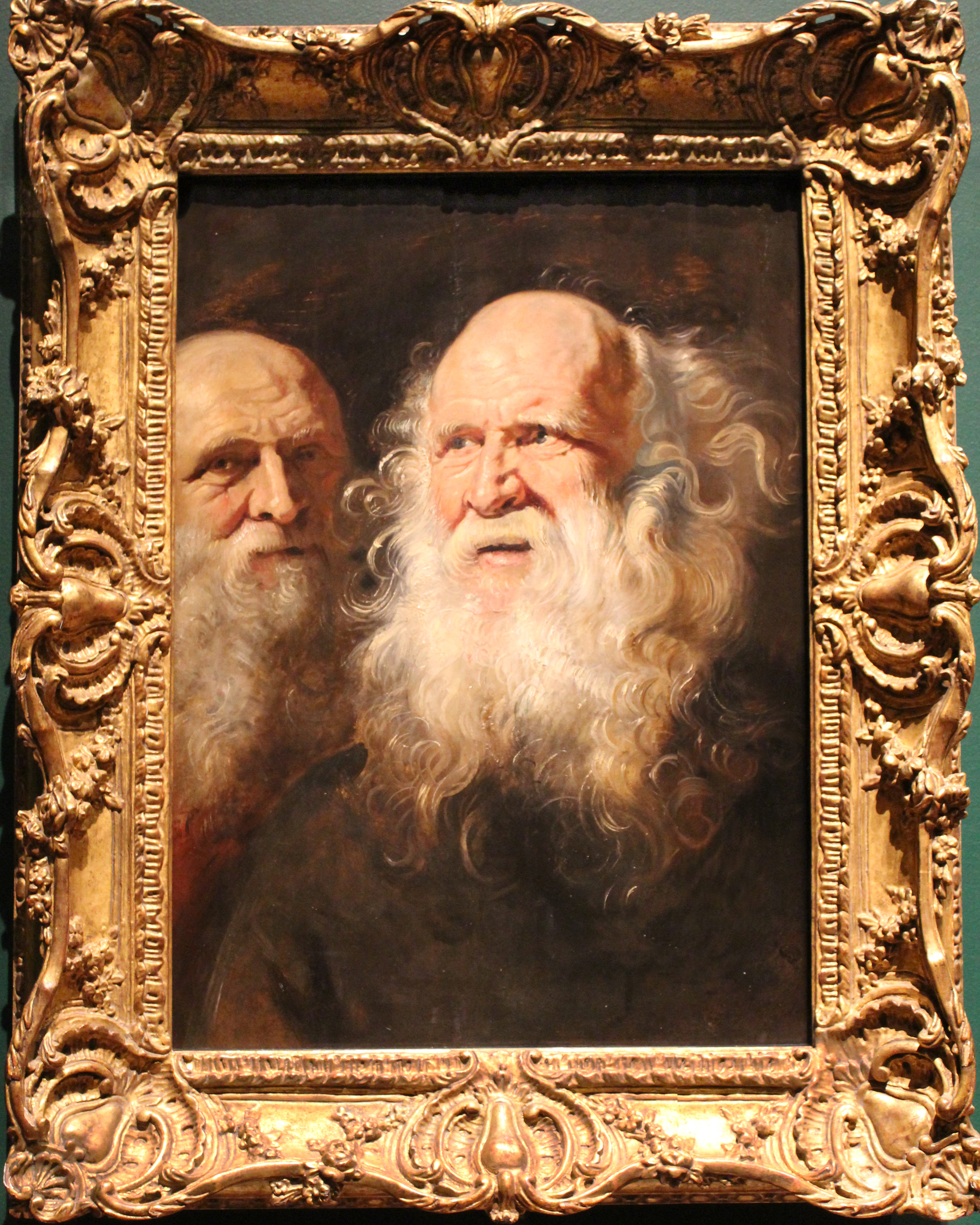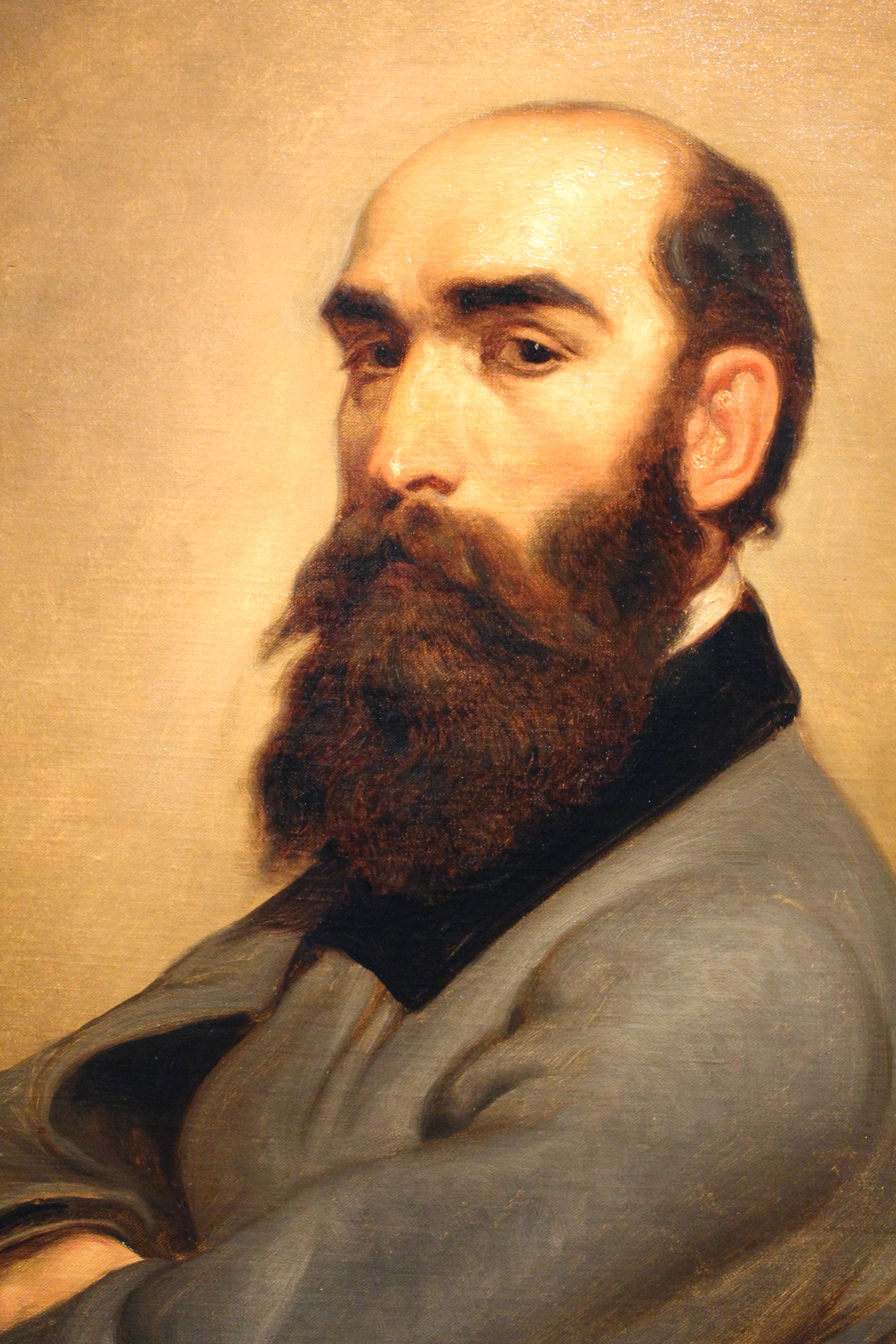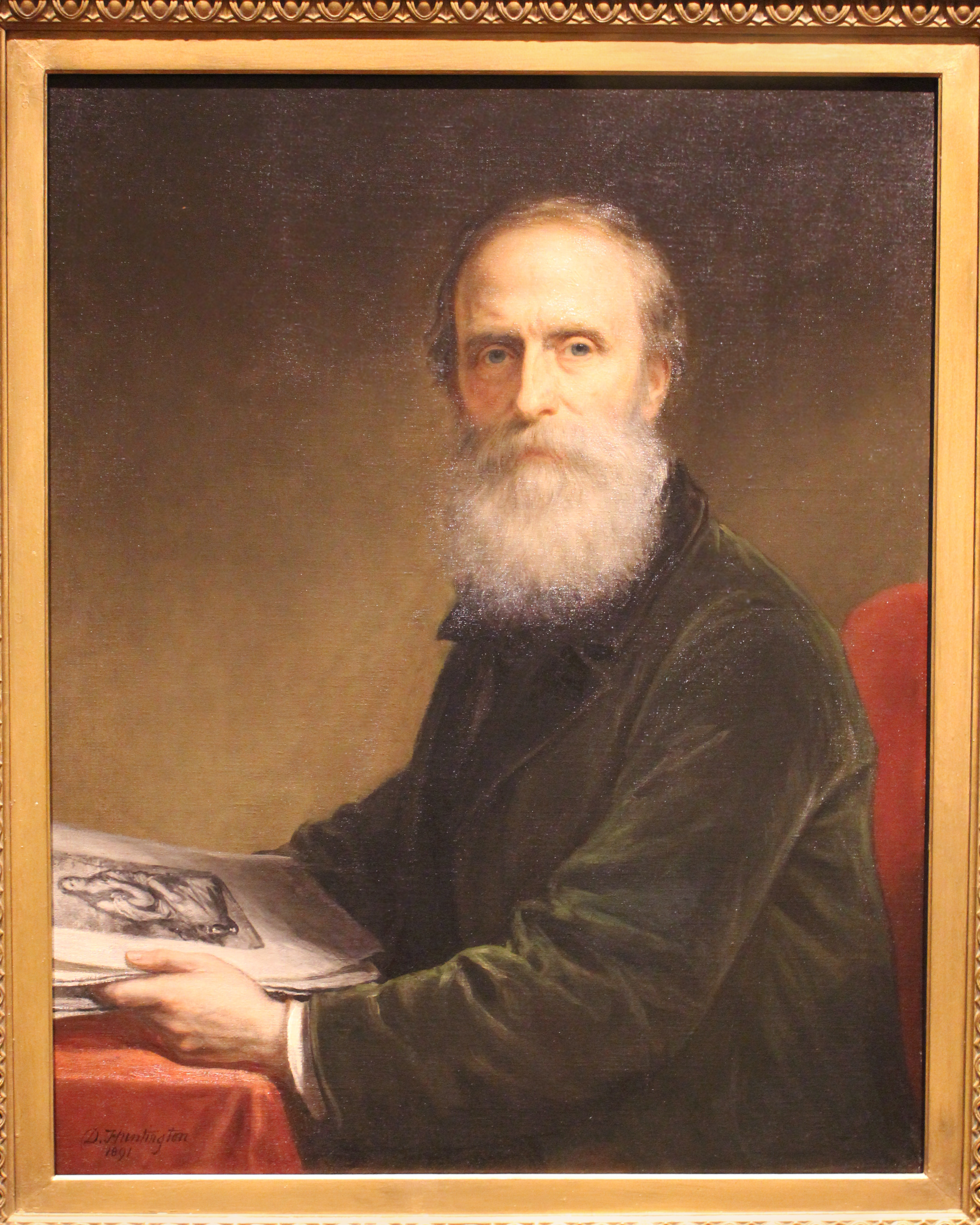
Saturday, May 11, 2019
Portraits Seen at Dayton Art Institute
8:13am
The first one isn't a portrait, but rather a study:
 Study Heads of an Old Man, c. 1612 Peter Paul Rubens, Flemish, 1577 - 1640 Antwerp Oil on wood panel Gift of Mr. and Mrs. Carlton W. Smith, Dayton Art Institute, #1960.82 "When this work was acquired by the museum in 1960, it featured a single portrait of an elder bearded gentleman. However, upon X-ray examination of the painting, it revealed that there was another portrait of the same gentleman to the left of the existing portrait. This hidden portrait was painted over at some point in the late 19th or early 20th century, likely an attempt to market the picture as a single, finished portrait. However, the revelation of the second head suggests that this work was in fact a portrait sketch for a larger work, thus the decision to leave the second face visible accorded with the artist's original intent. "It was not uncommon for artists of this generation to produce oil sketches as studies for larger compositions. This particular model was a favorite of Rubens' and appears in more than thirty larger works by the artist." (From info card) The following is another painting by Rubens:
"Previously identified as Flemish merchant Daniel Nijs (1572-1647), research clarifies this bust-length portrait actually depicts George Gage (1582-1632), an English diplomatic agent and art collector. Gage frequently visited Antwerp, and between 1616 and 1617, negotiated with Rubens regarding his pictures and other artworks on behalf of Sir Dudley Carleton (1573-1632), an English envoy in The Hague. "Recent conservation makes clear the lifelike qualities Rubens accomplished through his use of a simple composition and limited paletter. The portrait is animated through the diagonal positioning of the figure and the strong contrasts of lights and darks."(From info card) Jumping ahead a couple of centuries...
"Clara Soule, born into a prominent family of Ohio artists, was the eldest child of portrait painter Charles Soule. By the time Clara Soule was twenty years old, she had a thriving business selling still-lifes, landscapes, portrait, and hand-colored photographs. She owned her own art studio in Dayton, where she worked from the early 1850s until at least 1869. "She also headed the art department of Dayton's Cooper Female Seminary from 1857 to 1859. After her father's death in 1869, she is said to have painted portraits in Cincinnati, Lebanon, and Cleveland, Ohio, and in Lexington, Kentucky. The subject of this portrait, Lou Harries, was the eldest child of William and Elizabeth Harries of Dayton." (From info card) The following portrait was done in the same decade as that of the child:
This isn't the only time he painted Worthington Whittredge, who was an American artist of the Hudson River School and excelled at landscape painting. Whittredge served as president of the National Academy of Design from 1874 to 1875. (Source: Wikipedia)

"Huntington exchanged this self-portrait for his original diploma portrait, a likeness of himself painted nearly sixty years earlier by his close friend and brother-in-law, Cornelius Ver Bryck. It was natural for the Academy's venerable former president--elected twice to the role, Huntington served the longest tenure ever--to donate to the collection a mature self-image. A firm adherent to traditional artistic ideals, he pictured himself as a student and lover of the art of the past rather than as a successful professional artist. His direct gaze invites the viewer to share in his study and appreciation of an engraving after Titian's The Penitent Magdalen. (From info card)
 He looks at you patiently, as if you had interrupted his study. The following self portrait is done a year after Huntington's, but by an artist forty years younger:
The following artist was born a year before Sargent and shares the similar lively brushwork:
"As a single woman from an old family but with a distinct lack of fortune, Beaux made her way in her professional life as a portraitist, one of the best of her era. Society portraiture is today a vanished art. But Beaux had perceived a need: both newly minted millionaires and well-to-do scions of aristocratic families were seeking a contemporary read on the ancestral claims that commissioned portraits offered. "She filled that niche with a panache both traditional and new--brighter chroma, brilliant brushwork, and psychological immediacy. Her self-portrait is an advertisement. She is declaring: others may be able to depict stout, successful businessmen, but come to me for sympathetic views of men, women, and children." (From info card, words of Robert Kushner, NA) |
I will share more photos of portraits from my visit in the future!






